It’s no secret that New Zealand is hot right now. Consistently ranked as a top adventure destination, well-known for wine and for hobbits, New Zealand ranks somewhere on almost everyone’s bucket lists. While long a backpacker destination, New Zealand now also has a cult following of luxury travelers. Many of them stay in one or more of the 30+ luxury lodges, enjoy helicopter flights over the dramatic landscapes, and eat world-class foods prepared by top chefs.
But the backpacker vibe is still there. You can go, hire a camper van, and set out to follow in the footsteps of Frodo. I always tell my clients that NZ is deceptively big, meaning that despite what it looks like on a map, it sometimes takes twice as long to get between points A and B. What you need is the ultimate New Zealand guide, and I’ve got it right here.
Background: Ultimate New Zealand
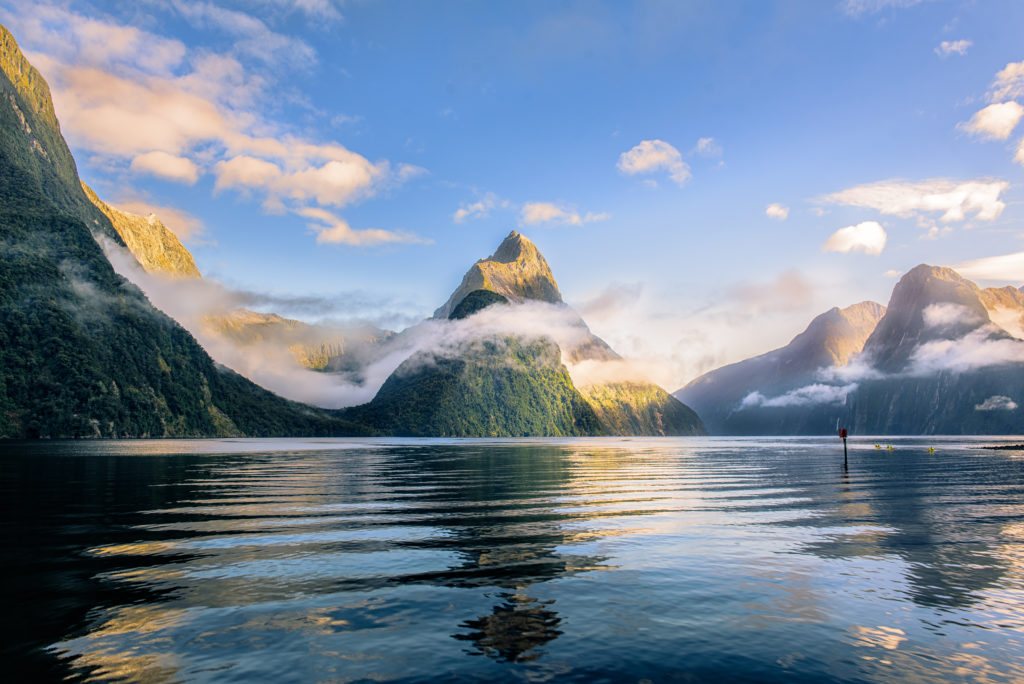
New Zealand is known for its epic landscapes.
As you’ve probably guessed if you read my other posts on New Zealand or found your way to my blog, I love New Zealand. My first visit was when I was just nine years old, stuck in the backseat of a rental car with two younger brothers, my parents up front navigating by way of an early 1990s guidebook and a paper map. I returned in 2014 for a three-week jaunt and in 2015 I took the plunge and moved there on a Working Holiday Visa. I absolutely love it, and that enthusiasm comes through when I’m talking to clients about it.
I’m a New Zealand Gold Specialist through the tourism board, meaning I have the resources and the connections to make my clients’ itineraries full of major wow factors. While this guide isn’t the be all and end all of Ultimate New Zealand posts, my experience and expertise in this country will guide you through planning your own trip (or, you can call me!).
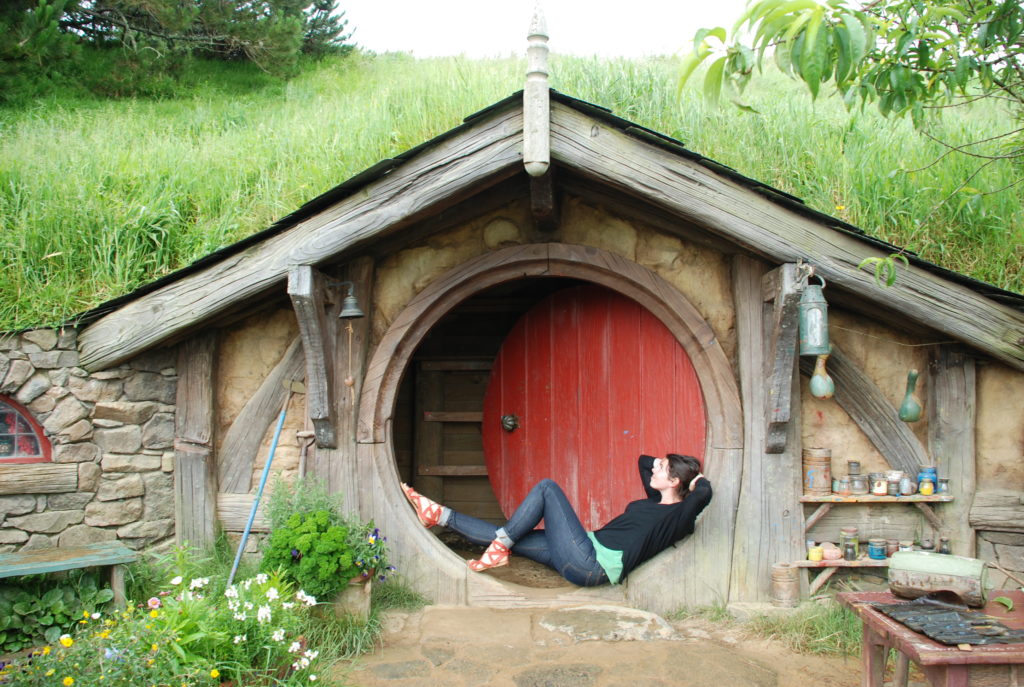
Me, hanging out at Hobbiton!
Check out some of my other New Zealand posts!
- Day Trips from Auckland
- Wellington – the Coolest Little Capital
- Public Transport or Hired Car? How to Get Around NZ
- Practical Advice For Travelling to New Zealand
Air New Zealand Is Making It Easier to Get To Middle Earth
First things first, it’s easier than ever before to get to New Zealand. Up until the early 2000s, the only gateway from the US were on the west coast: Los Angeles to be exact. In 2004, Air New Zealand (a Star Alliance member) began a San Francisco to Auckland route, followed in 2007 by a Vancouver to Auckland route. Then in 2015, Air New Zealand began operating a daily flight from Houston to Auckland. Their most recent long-haul route opened November 30, 2018 with a daily Chicago to Auckland route. These all codeshare with United, who also operates their own flights to New Zealand.
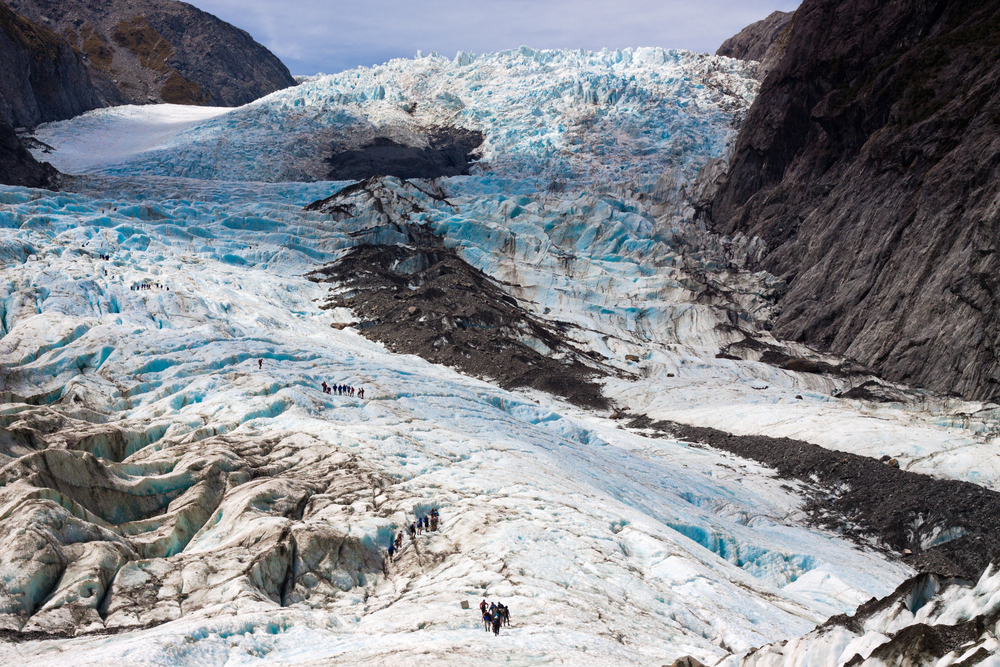
New Zealand’s South Island West Coast is home to some unique geology and beautiful glaciers
Getting Around New Zealand
Because I’ve done a whole post on the best way to get around New Zealand, I’m not going to go into a ton of detail here. Essentially, how you get around depends a lot on your itinerary.
If you’re traveling for three weeks, or more, and planning to see the entire country, moving every night, then a car is definitely your best bet. However, if you have just 12 days and want to see Auckland, Rotorua, Nelson, and Queenstown, then you need to consider domestic flights. And I hate to say this, but if you have just one week, pick another destination. New Zealand is deceptively big, and a week won’t even come close to highlighting all of the amazing things there are to see and do.
Practical Advice For Traveling To New Zealand
New Zealand lies in the Southern Hemisphere, southeast of Australia and due north of Antarctica. Seasons are reversed here, meaning summer is from December to March and winter is from June to September. “High season” typically runs from October to April, depending on where you are in the country.
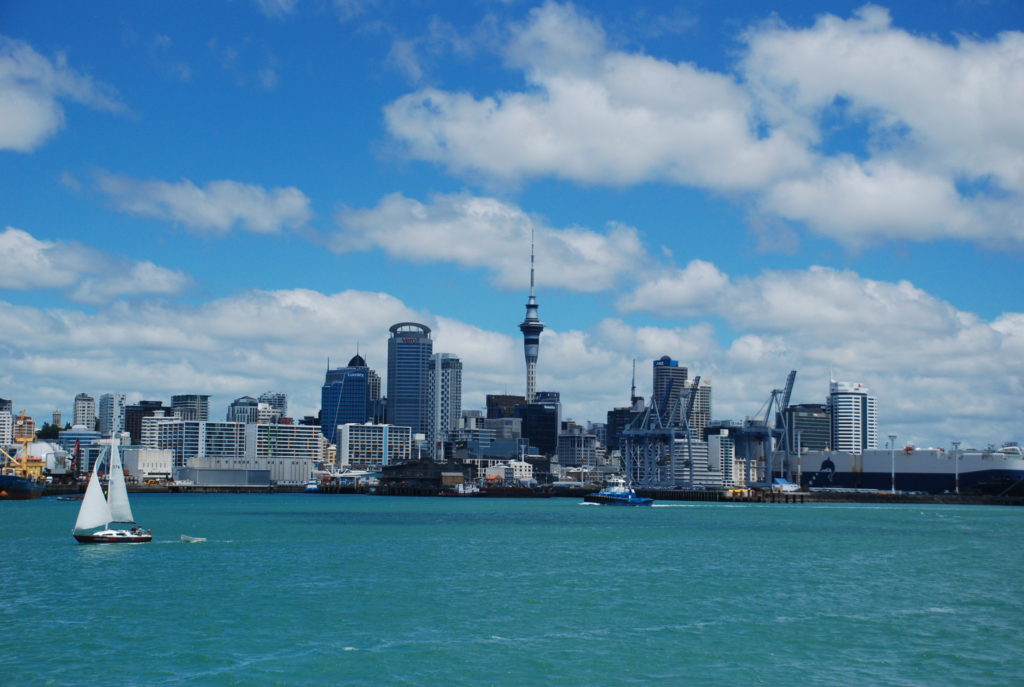
Auckland is the largest city in New Zealand. Its located at the northern part of the North Island and is the usual international gateway.
The currency is the New Zealand dollar (NZD). Voltage and power outlets are the same as Australia, with a wide three-prong plug. As a former British colony, New Zealand remains a commonwealth and still celebrates the usual British holidays as well as plenty of their own. (It’s also worth noting that not all holidays are celebrated across the entire country. Each region has an anniversary day – a holiday – that is not celebrated in the other regions.)
Like their friends in Australia, New Zealanders (Kiwis) drive on the left. Some rental cars will be manual, others automatic (always request what you want), and some have the windshield wipers/turn signals reversed from what you may be used to.
The capital of New Zealand is Wellington, located at the southern tip of the North Island. Auckland, at the northern part of the North Island, is the largest city and main international gateway. Christchurch is the largest city on the South Island.
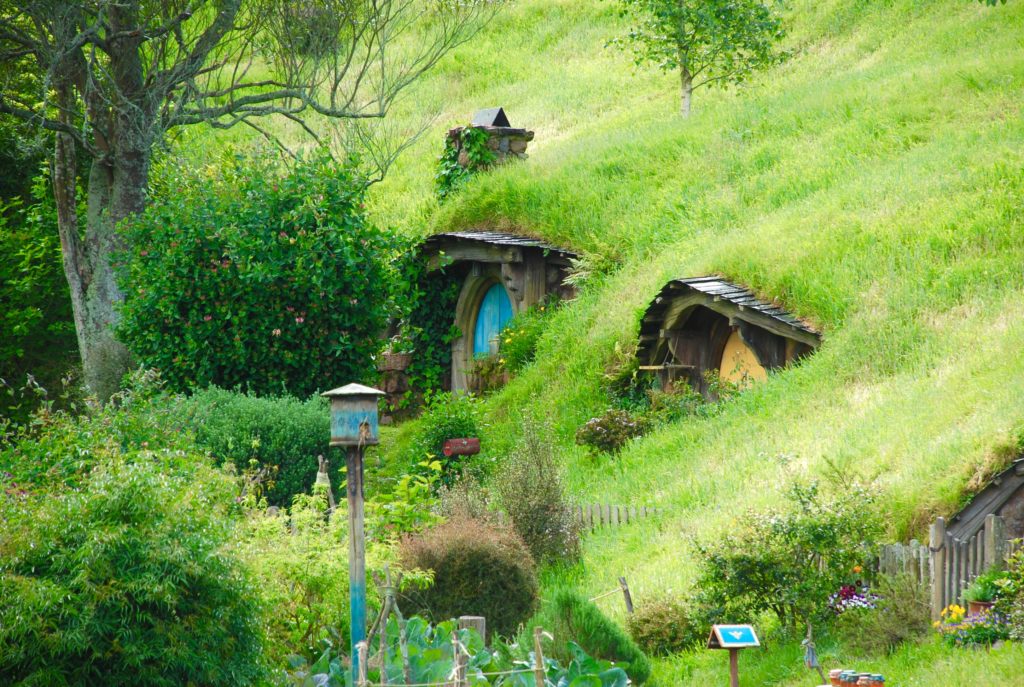
Explore the hobbit houses at Hobbiton, just two hours from Auckland, New Zealand
What To Do In New Zealand And Why
New Zealand’s biggest draw is the epic landscapes made famous in Sir Peter Jackson’s Lord of the Rings movies, Whale Rider, and Hunt For The Wilder People. But just as incredible are the food and wine, the people, and the adrenaline-pumping thrills. When I’m talking to clients about New Zealand, I’m asking them about their general likes and dislikes, what they enjoy doing while traveling, and style. None of the New Zealand itineraries I’ve designed have been alike.
For that reason, I think it’s super important to know what you want to see and do, and what you enjoy doing while at home. Travel is about getting out of your comfort zone, but if you’re not a morning person at home, chances are you are not a morning person while traveling. And if you can’t stand museums, or have a fear of heights, then I don’t want to recommend a day in the galleries of Auckland or a trip out to the world’s first bungy jump.
However, this wouldn’t be the Ultimate New Zealand Guide if I didn’t give you some great ideas for your trip. Instead of my usual breakdown into types of activities, I’ve broken this down into timeframes
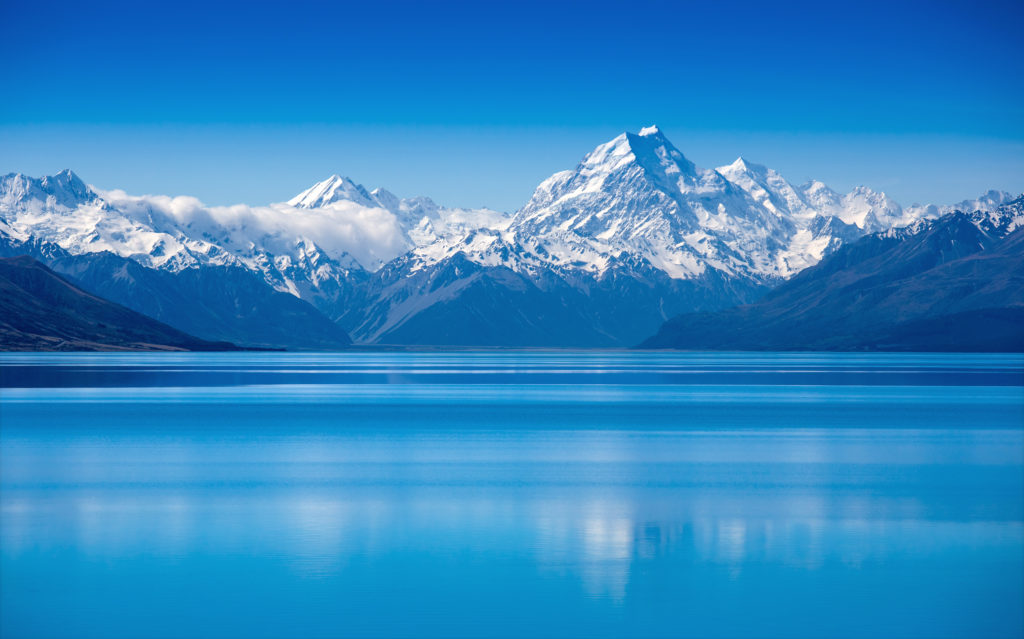
Aoraki/Mt Cook towers over Lake Pukaki and is the highest point in New Zealand. The nearby village has great day treks for those adventurous souls.
If you have ten-12 days in New Zealand…
Land in Auckland, and get immediately out of the city. Fly to Queenstown (three days), where you can visit Milford Sound, Wanaka, the Fiordland region, and more. You’ll want at least three days here, in case weather delays any of the Milford trips, and QT makes a great base to explore. Your next stop should be Nelson, for the jaw-droppingly gorgeous Abel Tasman National Park (two days). Fly across to Wellington, the coolest little capital, for two days, where you can go wine tasting, take in a few museums, and generally soak up a vibrant city culture. From Windy Welly, fly north to Rotorua for the remainder of the trip. Pick up a car here – you can explore Hobbiton, the geothermal sites, and the Maori culture. On your departure day, either fly or drive to Auckland.
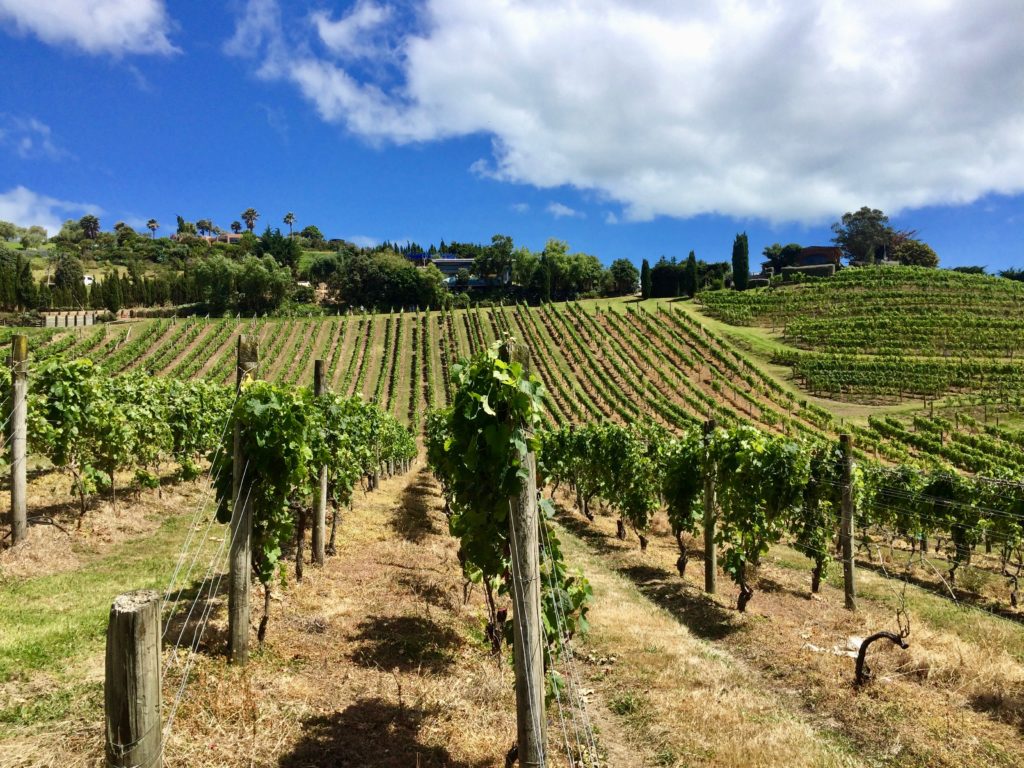
Waiheke Island is one of the most popular day trips from Auckland as its only a short ferry ride from downtown. Go for the beaches, the wineries, and the excellent local food.
If you have 14-20 days in New Zealand…
Savor a little island life when you arrive by heading to Waiheke Island (two to three days). Dive deep into New Zealand culture with food and wine or art tours on this island – just 40 minutes from Auckland. Drive to Rotorua (three days) and experience the geothermal attractions, Hobbiton, Maori culture, and more. I would also suggest doing something totally unique: hike an active volcanic island. If you’re outdoorsy, drive onward to Taupo and hike the epic 19km Tongariro Alpine Crossing, otherwise fly from Rotorua to Christchurch. Take one of the world’s best train journeys through Arthur’s Pass from Christchurch to Greymouth, pick up a car and begin to explore the West Coast (three to four days). (Our feature photo is from the Tongariro Alpine Crossing.)
The West Coast highway veers inland at the Haast Pass and continues into Wanaka and Queenstown. Stay here for four days – you can explore the Central Otago wine region, spend an overnight in Milford Sound, go horseback riding in Paradise – and then head northeast toward Aoraki/Mount Cook. Depart from Christchurch back to Auckland. (You can also do the South Island portion in reverse.)
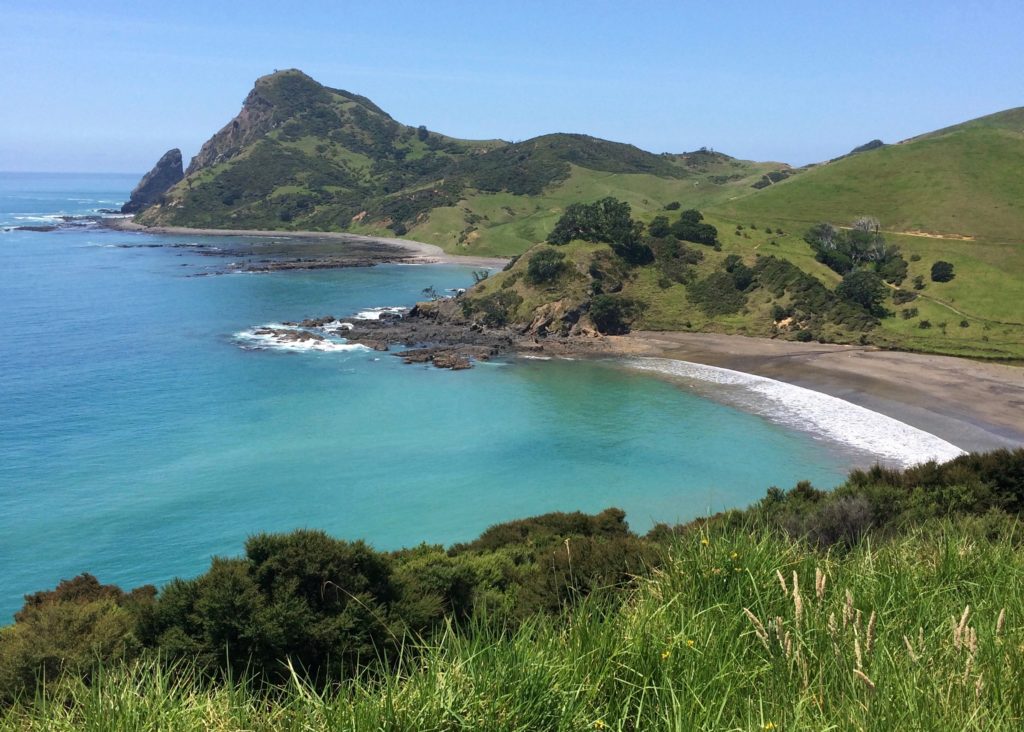
The Coromandel is often overlooked in favour of more popular destinations but if you have the time then it is a perfect stop for some relaxation, hiking, beaches, and beer.
If you have 21+ days in New Zealand…
With more than 20 days in New Zealand, you can easily expand on the two above itineraries for the ultimate New Zealand experience. Some regions worth exploring with more time are the Coromandel, Napier and Hawkes Bay, Dunedin and the Catlins, and the Northland/Bay of Islands.
How To Maximize Your Time In New Zealand
New Zealand roads are not like roads in the US. With the exception of the highways outside of Auckland, New Plymouth, Wellington, Christchurch, and Dunedin, even the major highways are two-lanes. Much of the goods transported around New Zealand go by road, too, so at any given time you could be stuck behind a logging truck or similar. The national speed limit is 100 kilometers/hour (65mph). I always tell clients to factor in extra time when driving. Consider that just because the map tells you it’s 100 kilometers away doesn’t mean it’s an hour away.
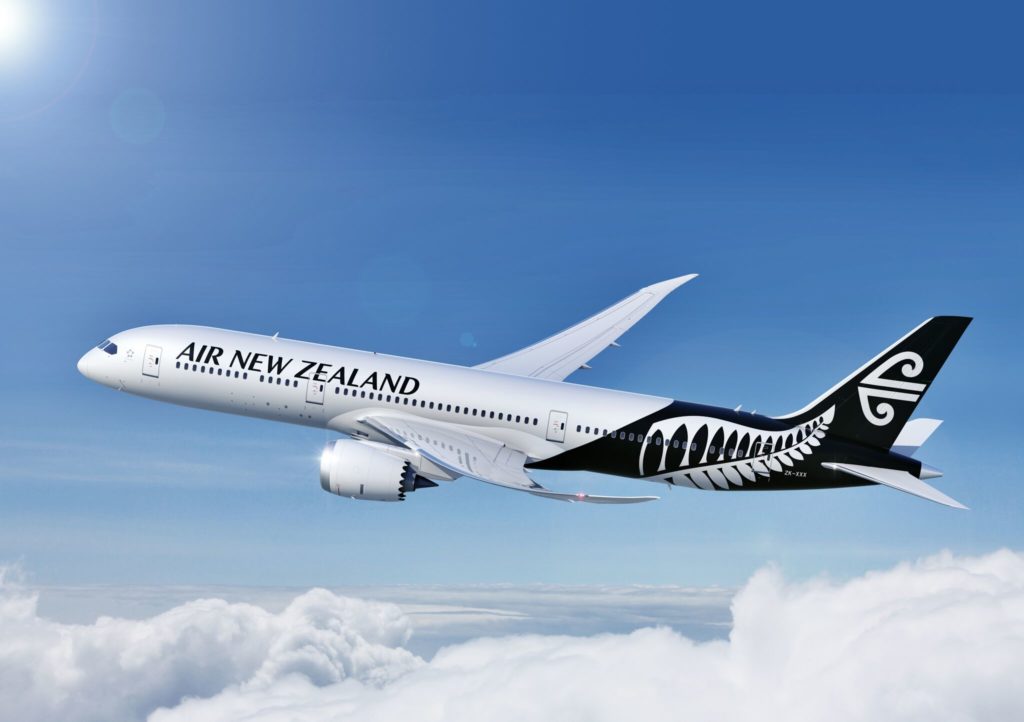
Air New Zealand makes it easy to get to, and get around, New Zealand.
Depending on where you travel in New Zealand, the domestic air network is excellent. Air New Zealand and JetStar fly regularly between all major cities multiple times a day, and it’s common for business people to fly up to Auckland for a meeting, and fly home that night. The cost of air travel in New Zealand isn’t prohibitively expensive either.
(However, that’s not to say driving in NZ isn’t absolutely incredible. If you’re keen to explore the more remote regions, and have the time and patience for driving, it’s utterly rewarding.)
Where To Stay In New Zealand
New Zealand has some incredible places to stay. You could stay in a remote lodge accessible only by helicopter, a lodge on top of the cliffs at the edge of the island, or a chic, modern hotel in the centre of the city. My biggest piece of advice when it comes to where to stay in New Zealand is to plan ahead. Somewhere in the realm of 60-70% of my business is New Zealand, so I know what I’m taking about. While it is easy to say you’ll figure it out when you get there, it’s getting harder and harder to do that. Accommodation fills up, especially the great properties, and if you’re planning last minute or planning to wing it, you could be out of luck.
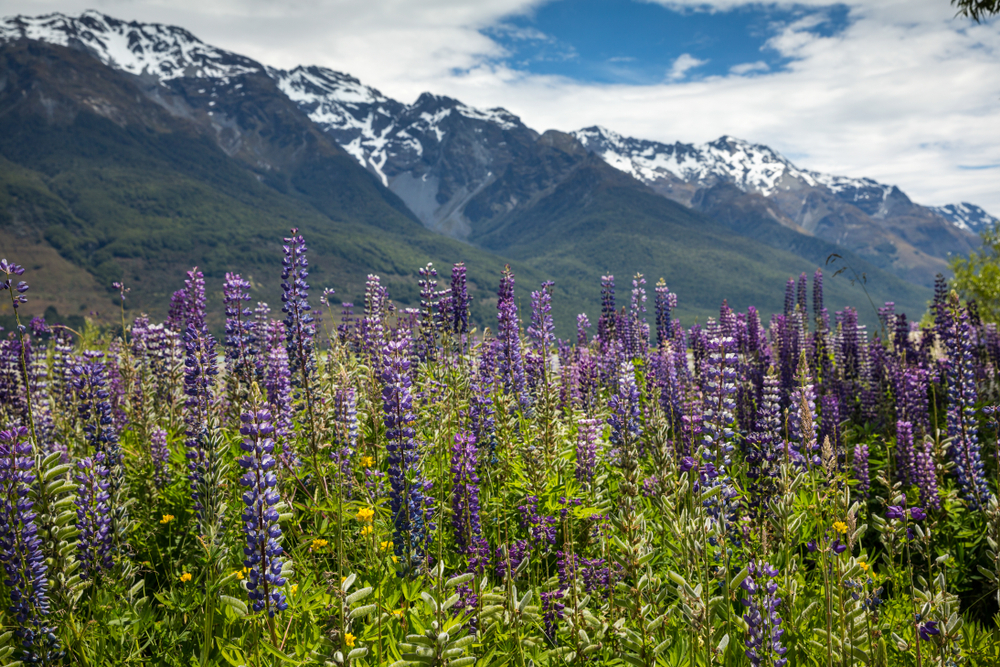
New Zealand’s best hotels and lodges are in remote places, perfect for soaking up the stillness and tranquility of the mountains, clifftops, or glacial valleys.
It’s also worth noting that outside of the major cities and towns, you’re unlikely to find hotels and lodges that are bookable on points. New Zealand is really about the luxury of getting away from it all, and the best properties take that to heart.
Here are some of my favorite luxury properties in New Zealand (from north to south).
North Island
Delamore Lodge: This gorgeous, six-room property on Waiheke Island looks out over one of the many bays. Every room has views from its private terrace, but the lodge pool is definitely the scene-stealer. Arrive by ferry from Auckland (a driver will meet you at the wharf) or helicopter in. Rooms start at $1,000 NZD/night in low season and $1,500 NZD in high season.
Wharekauhau Country Estate: An English-style country lodge located on top of the cliffs at Cape Palliser on the southern edge of the North Island, Wharekauhau boasts a working sheep farm, stables, and a beautiful owner’s cottage. With an award-winning restaurant and a new spa, it’s the ultimate in luxury (and a member of Relais & Chateaux). Arrive by private car from Wellington or by helicopter direct from the airport. In high season, rates start at nearly $3,000 NZD/night.
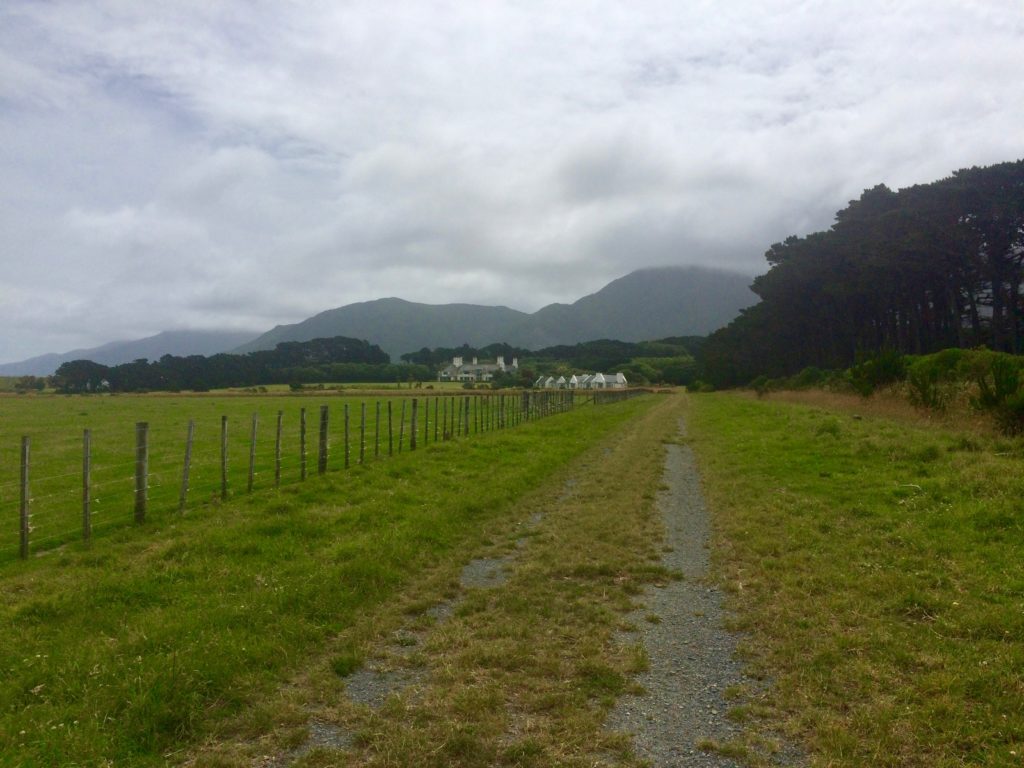
Luxury knows no bounds at Wharekauhau Luxury Estate located near Cape Palliser. The country estate and working farm caters to the ultra-luxurious and those seeking exclusive experiences.
South Island
Minaret Station: Tucked away in a glacial valley north of Wanaka, Minaret Station is only accessible by helicopter. Luckily, the brothers that own the property also own a helicopter company, so it’s pretty easy to get there. Once there, you can truly experience the remoteness of NZ. Chalets start at $2,500 NZD/night. Over Christmas and New Years, chalets begin at $2,800 NZD/night.
Eichardt’s Private Hotel: With an enviable location in the heart of Queenstown, Eichardt’s is perfect for those who enjoy being in the center of the action. Rates begin at $1,750 NZD/night in high season and $1,300 NZD/night in low.
Blanket Bay: Located in Glenorchy, which is around the lake from Queenstown, Blanket Bay is great for those who want to still experience the exciting activities (hiking, boat tours, helicopter tours) in this region but don’t want to deal with the vibrancy of Queenstown. Blanket Bay offers beautiful views of the mountains and Lake Wakatipu. Rooms are mostly all-inclusive (breakfast and dinner), and begin at $1,150 in low season, $1,750 in high season.
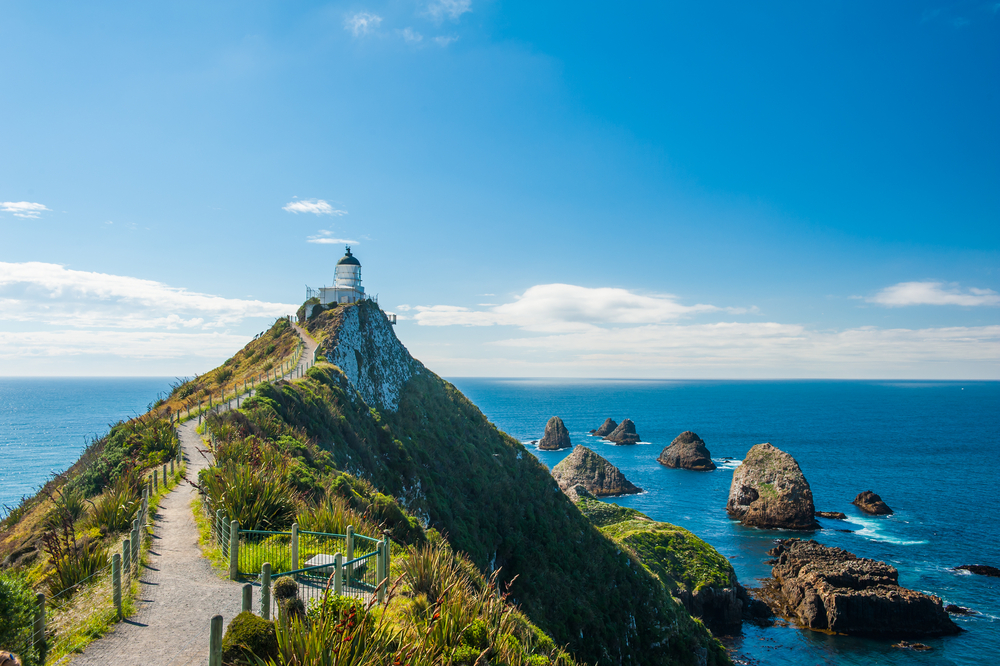
Some of New Zealand’s best landscapes are well off the beaten path, only accessible with a private car.
How Much Should I Budget For New Zealand?
Ahh the age-old question … how much will this cost? While I can never give a definitive answer based on a number of factors, I can at least give you an idea.
For many of us here in the States, you can assume that airfare will run anywhere from $1200/person to $5000+/person depending on class of service and dates. If you’re flying from the UK or Europe, likely in the €1000-4000 or £1500+ range. That’s of course booking in cash and at peak times. See our upcoming post on points and miles in New Zealand.
Depending on where you want to stay, you could be paying $50/night, or you could be paying $5,000/night. Chances are you’ll need to budget $400NZD/night for a 3* property, $500+ for a 4*. Go a bit higher if you are staying on a holiday (Christmas, New Years, Easter) or traveling during peak season (November – March).
Activity-wise, hikes are free unless you need to purchase a permit or hut pass in advance. Bungy jumping, skydiving, jetboating, canyoning, kayaking… these all tend to run in the $200-$500/person range but could be higher depending on where you are. Activities like helicopter tours, flightseeing excursions, or heli-glacier hikes, are going to be upwards of $500/person depending on dates and availability. Anything private you can add a few hundred dollars to.
If you’re renting a car, you need to factor in cost of petrol, added insurance, and parking in the cities/towns. At a rough cost for all that (including car rental), budget an average $75-$150/day for a car.
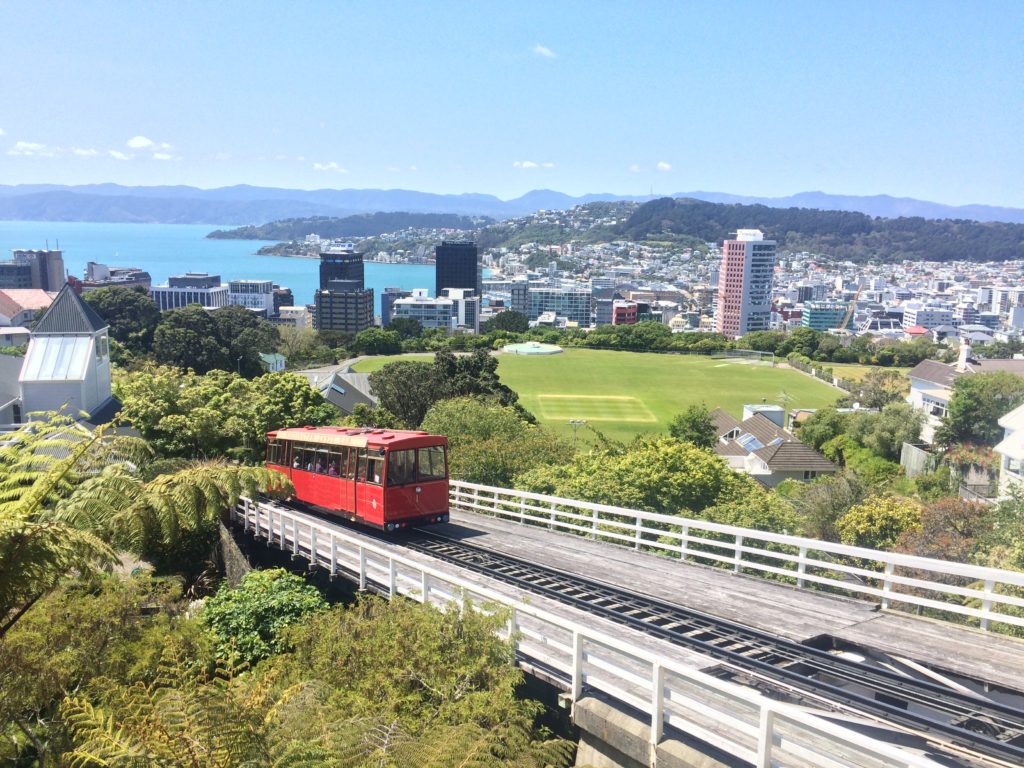
The Wellington, New Zealand cable car runs between Lambton Quay and the botanic gardens.
Food in New Zealand tends to be high, in both shops and restaurants. Here’s why: New Zealand is an island, so many things must be imported. The minimum wage in New Zealand is $16.50 NZD, but most places pay their staff more than this. Tips are not expected in NZ, either, so even restaurant and hotel staff make around $20/hour. While I can’t tell you how much to budget for food, I can suggest $10-20 for breakfast/lunch per person, and $50+ for dinner/person.
While typically I would say cities are more expensive, in NZ it doesn’t really matter. Small remote towns may be slightly less overall, due to lack of interest, but a coffee at a cafe in the Catlins costs about the same as a coffee at a cafe in Auckland.
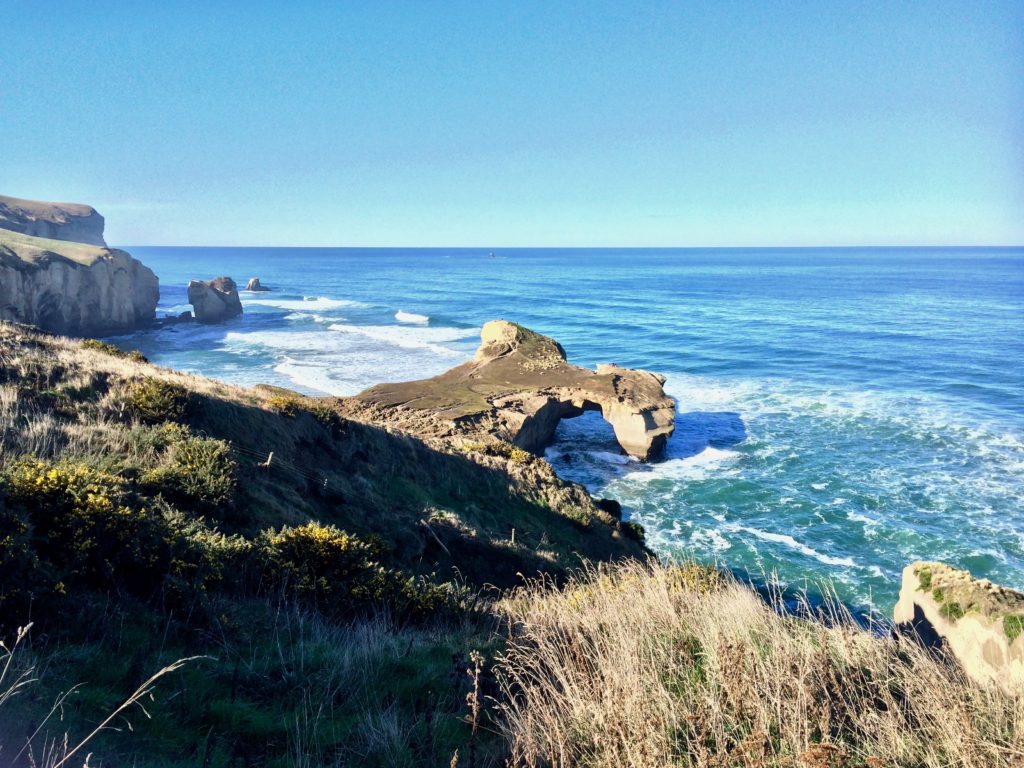
Despite its diminutive size, New Zealand is deceptively big, and it requires more time than you’d expect to get around New Zealand. Some of the best sights are well off the beaten track.
Overall (and this is very dependent on your dates, style of travel, and eating habits), I would suggest no less than $5,000 USD/person for a 2 week trip. Obviously, if you plan to stay in hostels and cook your own food, you can go for much less. The majority of my clients are typically over this per person cost.
The Upshot
From wineries to whale watching, Hobbiton to hiking, New Zealand truly offers something for everyone. Accommodation runs the gamut from backpacker hostel to the luxury lodges listed above. And with accessible cities and towns, getting around is easy. While I definitely suggest only going if you have least 14 days for land, you can still make the most of a 11-12 day trip. Then, you can truly make the most of Ultimate New Zealand!
The responses below are not provided or commissioned by the bank advertiser. Responses have not been reviewed, approved or otherwise endorsed by the bank advertiser. It is not the bank advertiser's responsibility to ensure all posts and/or questions are answered.
2 comments
Well, since I just got back from a one-week trip to New Zealand and had a fantastic time, I would definitely disagree with your advice not to go for such a short period of time. I would agree, though, that such time constraints mean that one doesn’t have time to tour the country. We flew into Queenstown and spent all of our time in the Southern Alps, and a week was sufficient for seeing that part of the country. We went right to Mt. Cook and spent a night at the Mueller Hut, hiked down and spent the next night at Wanaka, drove to Te Anau and saw the glowworm caves and spent a night there, drove to Milford Sound and then hiked the Routeburn Track, before spending our last two days in the Queenstown area (Skyline gondola, Arrowtown, Goldfields, etc).
We didn’t spend a lot of money. Meat pies are delicious and cheap. Fresh fruit in Cromwell is delicious and cheap. I certainly didn’t spend more there than I would have spent on a comparable trip here in the US. It was a great trip, and I’ll hope to go back to NZ sometime and see more of the country than just the southwest quarter of the South Island.
Thanks for your input! It sounds like it was a great trip. What I meant is that it’s not practical to plan to go to New Zealand for a week – seven days TOTAL – an expect to see the entire country. If you can map it out like you did, then a one-week trip might work for some. However, it sounds like you had a full week in the country, travel days excepted. If someone has just five days off work and still has to travel, it’s a long way to go for such a short period of time, and for quite a bit of money.